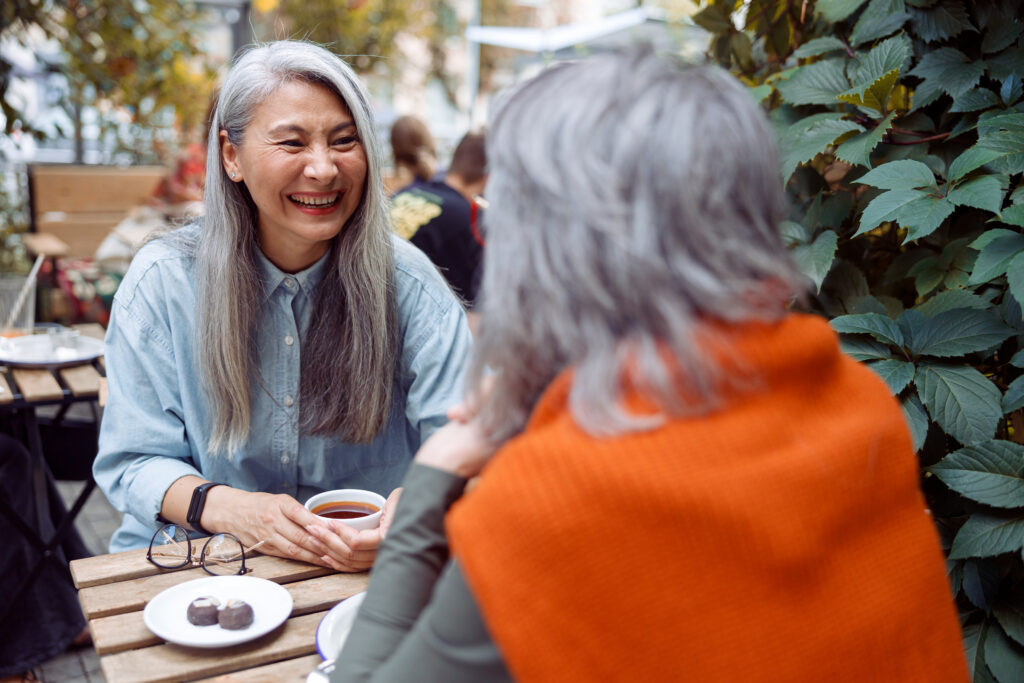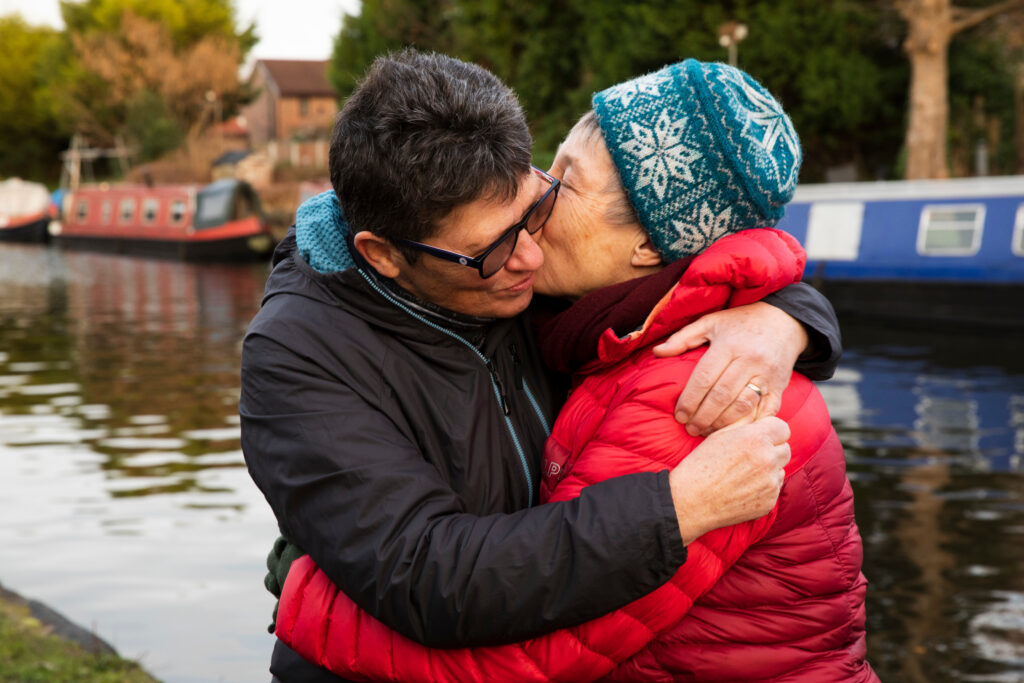What are perimenopause and menopause?
Menopause is when a woman or person with ovaries has had their final period, and it’s a normal part of getting older. In Australia, most people go through menopause around 51 years of age. After one year without a period, a woman is said to be ‘postmenopausal’. Some women might have menopause earlier, either because of medical treatment (such as chemotherapy or surgery to remove their ovaries) or as a natural process. If menopause happens before age 40, it’s called ‘premature’ and if it occurs before age 45, it’s ‘early’ menopause.
Perimenopause is the stage leading up to menopause. Typically, this is when periods start to become less regular, and usually begins around age 47. After menopause, the ovaries don’t release eggs and produce less oestrogen and no progesterone.
Every person’s journey through menopause is different and may include positive and negative aspects. Some women see the bright side, like no more periods or need for birth control (although it’s still important to use protection against sexually transmitted infection). A study in Australia of more than 700 people found that 9 out of 10 weren’t troubled by menopause changes.
Our personal experiences and background can influence how we feel about menopause. In places where a woman’s worth is tied to being young or fertile, menopause can be seen in a more negative light.
Most women experience some symptoms during perimenopause and menopause, but these feelings are usually short-lived and don’t need medical treatment. If they are more challenging, there are treatments to help (see Menopause treatment options and tips). It’s vital for all women to have supportive healthcare and to be a part of decisions about our health.

Menopause for trans and gender diverse people presumed female at birth

People with functioning ovaries who do not identify as women will also experience menopause if they stop taking or do not take gender-affirming hormones. People in the LGBTQI+ community experiencing menopause can face additional barriers to accessing appropriate and affirming healthcare. This is partly because there is limited available research on the specific healthcare needs of this community.
It is important to speak to a doctor you trust to work out the best care plan for you.
Resources to help you manage perimenopause and menopause
- My Menoplan is a resource designed to help you create a menopause management plan.
- Women Living Better is a resource focused on perimenopause.
- Jean Hailes for Women’s Health have worked with Aboriginal and Torres Strait Islander women to produce a resource for First Nations women.
- For more information for LGBTQI+ people experiencing perimenopause or menopause, click here.
- For information about menopause in languages other than English, check out the Multicultural Centre for Women’s Health.
- The North American Menopause Society has information about medically induced menopause.
- Healthtalk Australia has information about early and premature menopause, including women’s experiences.
Australasian Menopause Society (2017) Menopause what are the symptoms?
Australasian Menopause Society (2019) Lifestyle and behavioural modifications for menopausal symptoms.
Australasian Menopause Society (2022) What is menopause?
Alspaugh A, Im E-O, Reibel M, Barroso J (2021) The reproductive health priorities, concerns, and needs of women in midlife: a feminist poststructuralist qualitative analysis. Qualitative Health Research. 31(4): 643-653
Calvaresi E, Bryan J (2003) Symptom experience in Australian men and women in midlife. Maturitas. 44(3): 225-36
Cheung AS, Nolan BJ, Zwickl S (2023) Transgender health and the impact of ageing and menopause. Climacteric. 26(3): 256-262
Continence Foundation of Australia (2021) Who it affects
Glyde T (2021) How can therapists and other healthcare practitioners best support and validate their queer menopausal clients?. Sexual and Relationship Therapy
Haggan M (2019) Breaking the taboo: the real story of menopause. AJP: The Australian Journal of Pharmacy. 100(1181): 44-48
Health Talk Australia (2023) Early menopause experiences and perspectives of women and health professionals
Hickey M (2022) Normalising menopause. The British Medical Journal. 377(e069369)
Hoga L, Rodolpho J, Gonçalves B, Quirino B (2015) Women's experience of menopause: a systematic review of qualitative evidence. JBI Database System Rev Implement Rep. 13(8), 250-337
Lobo RA, Gompel A (2022) Management of menopause: a view towards prevention. The Lancet: Diabetes and Endocrinology. 10(6): 457-470
Magraith K, Stuckey B (2019) Making choices at menopause. Australian Journal of General Practice. 48(7): 457-462
Multicultural Centre for Women’s Health (2023) Menopause fact sheets in eleven languages
My Meno Plan (2020) What if I am transgender or non-binary?
North American Menopause Society (2023) Instant help for induced menopause
North American Menopause Society (2023) Urinary incontinence
Philpott L (2017) OTC: Women's health: a time for change: post menopausal health. AJP: The Australian Journal of Pharmacy. 98(1159)
Philpott L (2022) Menopause: supporting women in midlife and beyond. AJP: The Australian Journal of Pharmacy. 103(1213): 54-56, 58